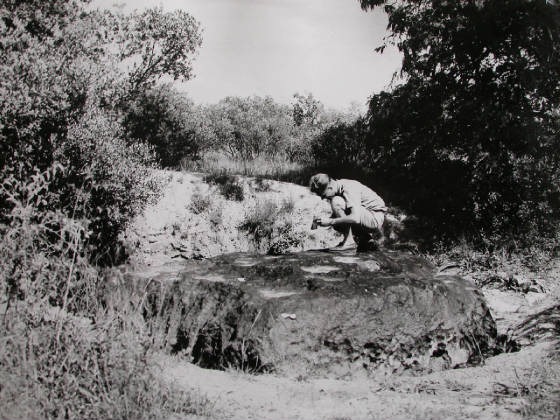The Hoba meteorite is thought to have landed less than 80,000 years ago. Curiously, the meteorite left no visible crater. It is speculated that the meteorite entered the Earth’s atmosphere at a very shallow angle, slowed down by the atmosphere to the point that it fell to the surface at terminal velocity, thereby remaining intact and causing little excavation. The meteorite is unusual in that it is flat on both major surfaces, possibly causing it to have skipped across the top of the atmosphere in the way a flat stone skips on water.
The meteorite measures 8 feet 9 inches by 3 feet. In 1920 its mass was estimated at 66 tons. Erosion, scientific sampling and vandalism have reduced its bulk over the years to an estimated 60 tons. Marks of iron saws can be recognized easily at many places on the meteorite surface.
In the attempt to control vandalism, the Hoba meteorite was declared a National Monument in 1955. However, vandalizing of the meteorite continued until the Rössing Foundation funded a thoroughly restoration and preservation of the meteorite in 1988. Later that year, a tourist centre was opened at the site. For a small fee the Hoba iron can be visited, touched and even climbed for spectacular photo shooting. The Hoba meteorite is now visited by thousands of tourists every year.
Close up pictures of the Hoba meteorite shows marks, cuts and signs of vandalism
A group of German geologists at the Hoba, back in 1929

Early traveller visiting the exposed Hoba meteorite, around 1955
Hoba Meteorite : Photo before preservation, about 1960

















0 comments:
Post a Comment
PLEASE LEAVE COMMENTS